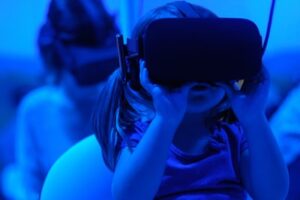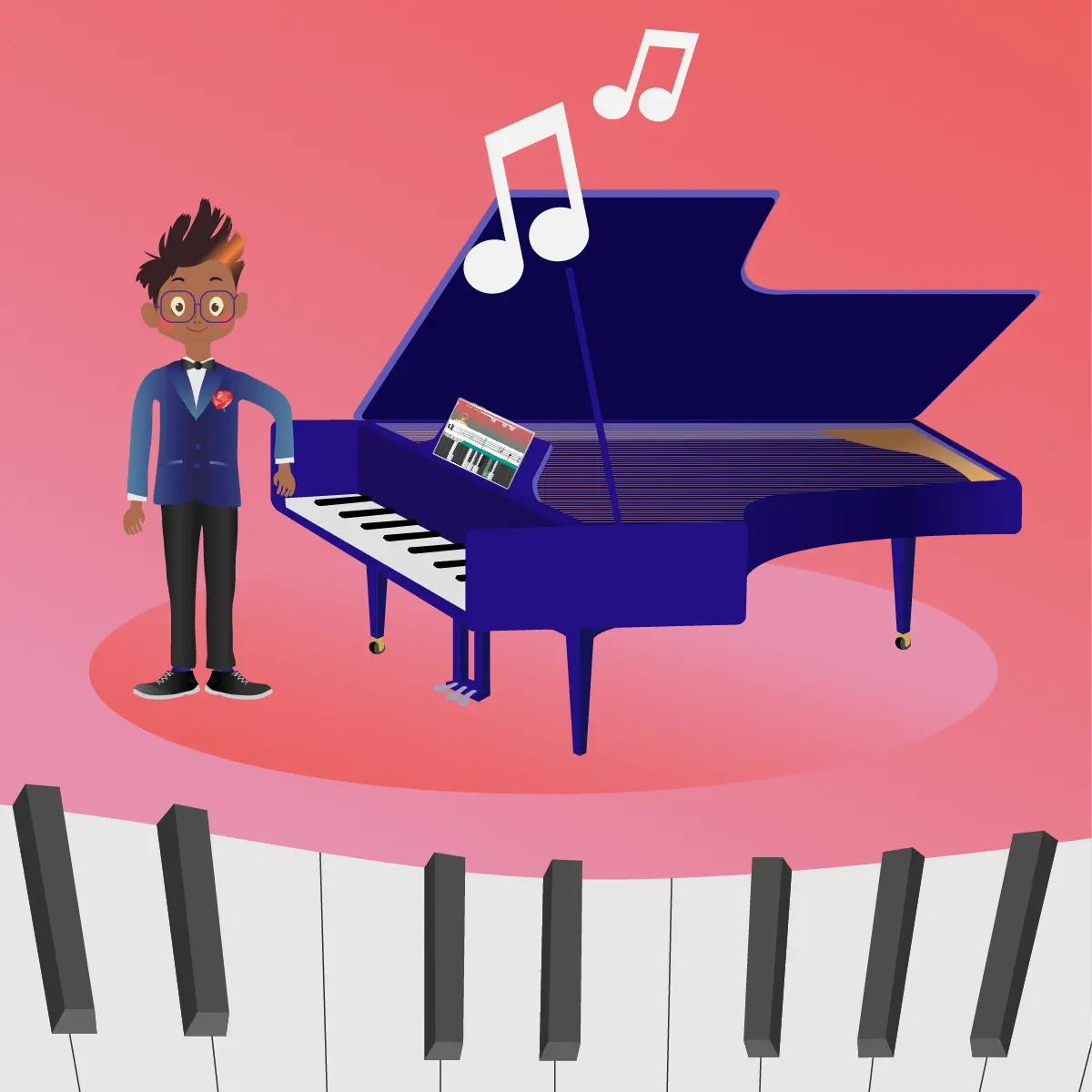By Arctic Meta
It’s pretty safe to say that school has changed a lot since most of us were there. From personal experience, the main things I can point out are the physical differences whenever I see a modern classroom.
There’s no blackboards or chalk, the colour schemes aren’t typically reminiscent of the mid-80s, and there are so many laptops and tablets everywhere! At least, you can forgive plenty of us for wondering where exactly is Mr Scott and the engine room?
For a person who is old enough to remember when the internet was first introduced to a school computer lab, this is astounding.
Technology has become such a huge part of our lives; it has innovated the way we work, travel, deal with our health, and also how we are educated, but is it for the better?
What is the true impact of technology? What exactly is digital education? What are the pros and cons? If you want to find out all this and more and boldly go where no one has gone before, read on.
The Rise of Digital Learning in Schools

Before we look at the rise of digital learning, we need to know exactly what it is.
Digital learning is where a person learns something without the need for in-person lessons. This can be in the form of video tutorials, online lectures, PDF resources, or any other medium that lets the student learn from the comfort of their own home or anywhere they have an internet connection.
Digital learning has actually been around longer than most people think.
Many people in English speaking countries like the US, UK or Australia can remember a period in the early 90s where it was normal to have class time dedicated to playing a computer game in the school library.
Many people, now well into their 30s, can remember playing ‘The Oregon Trail’, ‘Granny’s Garden’, or ‘Where in the World is Carmen Sandiego?’ These were all computer games that aimed to educate while entertaining.
It was a revolutionary concept at the time. To enhance a child’s understanding of things like history, geography, logic, reasoning, and problem solving, yet not make them feel like they’re learning at all.
Flash forward to today, and just about every classroom in the developed world has wifi, most students never need official lessons on how to touch type, and digital learning has established itself as a strong resource in the classroom.
In fact, a recent survey found that 96% of teachers feel educational technology dramatically boosts student engagement.
What Are the Main Problems Associated With Digital Learning in Education?

Yes, digital learning seems to be the new buzzword when it comes to education, but is it perfect?
It’s always good to have a bit of healthy skepticism so let’s have a look at some of the problems and concerns people have with digital learning in an educational context.
Shortening Attention Spans

The need to multitask is now more common in schools than it ever was.
The average student will now deal with many different sources of information at once on their own computer screen.
They will normally spend a day working with multiple open windows and tabs while also using interactive resources like educational video games and digital whiteboards.
There is a concern that this will lead to shorter attention spans when these students reach adulthood.
Duration Children Are Using Digital Devices

The amount of screen time children should be allowed in a single day has been a topic of debate ever since screens entered our households in the form of TVs.
The main fear some have around this is that the increase in usage of digital devices will impair social and cognitive development in children.
Basically, there’s concern that kids will grow up not really knowing how to interact with the real world around them.
It’s believed that kids might feel heightened social anxiety if they have excessive screen time, although one study seemed to show that it’s actually the other way around. It’s the anxiety that leads to the screen.
Changes in Communication Methods

There’s something a bit different and unique about the fact that the methods of communication have changed so dramatically. This can, of course, lead to safety concerns from parents due to the anonymity of people online, but that’s a given.
The biggest thing to think about here is more than the way kids connect to each other is changing.
It may seem a bit out of the norms of what we as older people are used to, but it’s not really any different from the generational divides we’ve already seen.
Most millennials would rather receive a text than a phone call, and boomers will happily dial a number to speak to a stranger to fix a problem.
Just remember it wasn’t so long ago that we wouldn’t even imagine having a work meeting online, but here we are.
Cyberbullying

Cyberbullying is a serious problem that has grown out of the innovation of technology and the digital connection of kids to each other.
There are many school systems that take a no-tolerance stance to this, and the vigilance of parents is definitely key to enforcing this.
It’s important to maintain an open dialogue with your children so they feel they can come to you the second anything like this happens.
They need to know what cyberbullying is, how it affects people and why they should never participate in it.
Changing Leisure and Activity Patterns

Just enjoy that above picture of a lazy pug for a second.
Yes, obesity rates are a major health issue at the moment throughout most of the developed world.
It’s normal to be concerned that our children are spending more time playing games on their devices than they are running around outside.
However, it is worth mentioning that a recent study showed that, like in adults, diet seems to have more impact on childhood weight gain than the amount of time they spend exercising.
An Overload of Information

The internet is filled with vast quantities of information.
One incredible benefit of this is that if a child is fascinated by something like the sinking of the Titanic, they can instantly find out everything about it from their own living room.
The negative is that there’s also a lot of unverified information on the internet. Children haven’t learned the skills to cope with this yet.
They lack the ability to critically assess information and determine if the source of it is authentic… but then again, many grown-ups lack that skill too.
Economic Disparities
Economic disparities can be hard for children to deal with. They know that their parents work and that it pays bills, but they don’t necessarily understand that not every household has the same income.
This can especially become obvious when they don’t understand why their friend has the latest iPad, and they don’t.
It is hoped, though, that as the world catches up to the technological revolutions occurring, more and more people will have access to it irrespective of their socio-economic status.
What Are the Main Benefits of Digital Learning in Education?

Now that we have taken a look at some of the concerns people have about digital learning, let’s check out the benefits it can have in education.
Wider Accessibility

Digital learning and educational technology are enabling students access to information and opportunities that they previously would never have had before.
This goes beyond the effects of using a few apps in the classroom; digital learning is bringing education to people all over the world who are sometimes the first in their families to receive it.
It may come as a surprise to you, but more people in the world have access to the internet than those that have a bank account.
This form of accessibility is changing lives for people every day.
Flexibility in Learning and Development

The introduction of digital learning allows educators to focus on the individual on their journey. It helps make it possible for a teacher to assess a student’s specific needs and change things if they simply aren’t working.
Digital learning can also provide a better framework for educating children with things like Autism and ADHD.
It creates a much more flexible environment where things can change if needed, but the student is still able to get their complete education.
A More Engaging Method of Learning

It’s pretty obvious that children will be more engaged with things that are fun. It’s the reason why they tend to prefer math over music (even though they’re actually more similar than you might think).
Incorporating technology into education will always enhance the experience and increase the retention of knowledge because it inherently taps into a child’s sense of play.
They automatically associate digital things as something that’s engaging and fun from a young age, so when a device is brought out that just happens to be filled with math problems, they are far more likely to get stuck into it than if the problems were scribbled on a whiteboard.
Personalized Learning to Children’s Individual Progress

Students are as individual as fingerprints, even when they are twins. It’s silly and old fashioned to assume that one single approach to education works for everyone.
It’s the way we worked in the past, but we now know that we need to focus a bit more on the individual student and their needs.
Within the framework of digital learning, there is, of course, a set curriculum, but this can be adjusted to meet the needs of the student, so they are never left behind.
Sometimes one student will pick up something very quickly but struggle with a different concept that their peers have no problem with.
Digital learning lets students take the time they need to fully comprehend something before they move on. This approach can do wonders for their understanding and academic achievement.
Improved Tracking of Individual Child’s Progress

Within the digital learning environment, it’s easy to check on the progress of a student in an instant.
This means that there’s an online record of all their work, and it’s easy to see any areas they need extra assistance with.
This also means that parents and teachers can few this together and better communicate any concerns they have for the child’s learning journey.
Weighing Up the Pros and Cons of Digital Learning

While there are both pros and cons to digital learning, it does seem that the pros greatly outweigh the cons.
The main reason for this being that the vast majority of the cons aren’t exclusively related to just digital learning.
Screen time, attention spans, changes in communication, bullying, childhood obesity, information overload, and economic disparities are not caused by the introduction of digital content.
These issues exist outside of education and were already problems before digital learning came along. It doesn’t mean we shouldn’t be doing all we can to address them, though.
The benefits, on the other hand, are completely unique to digital learning environments and will only continue to grow and evolve as technology does.
How Mussila Supports Digital Learning For Children

Mussila is a music education app that’s at the forefront of digital learning for kids.
It works by combining a sense of play with musical education in a completely digital learning environment.
Students can begin with no musical knowledge whatsoever and progress through learning challenges as they build their skills.
For parents, Mussila offers an incredible way for your kids to experience musical education without the need to invest in expensive instruments and lessons that they may not end up liking. The best part is it’s completely autonomous, so it doesn’t need constant parental supervision.
Mussila also has learning paths specifically designed for schools. This version of the app is an incredible tool, especially at a time when remote learning is common. It’s four learning cycles are designed to provide more than 30 courses in 35 languages.
Mussila for schools is an essential digital music learning tool for students from 6-12 years old.
Check out the Mussila App or read more about it, and you’ll soon see why this award-winning innovation is a must-have.
Conclusion

Digital learning is already having an incredible impact on the way kids are learning.
Not only is it giving them unprecedented advantages, but it’s also preparing them for a world that not only embraces technology it relies on it.
If you want the best for your children, now is a great time to embrace the wave of digital learning.















